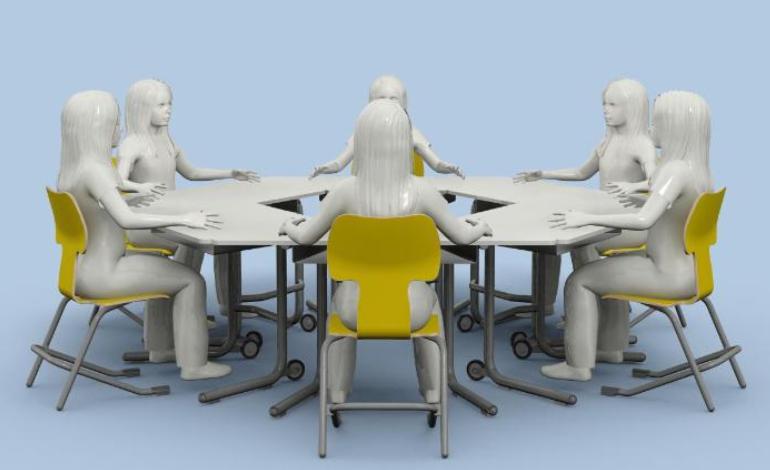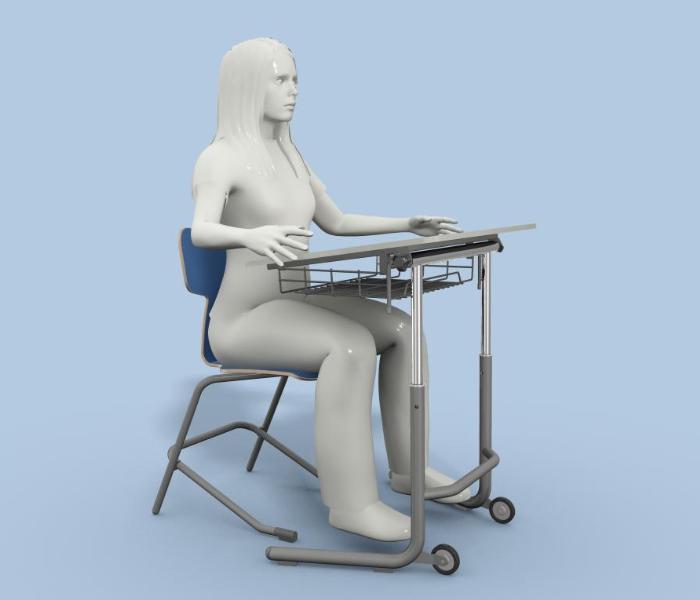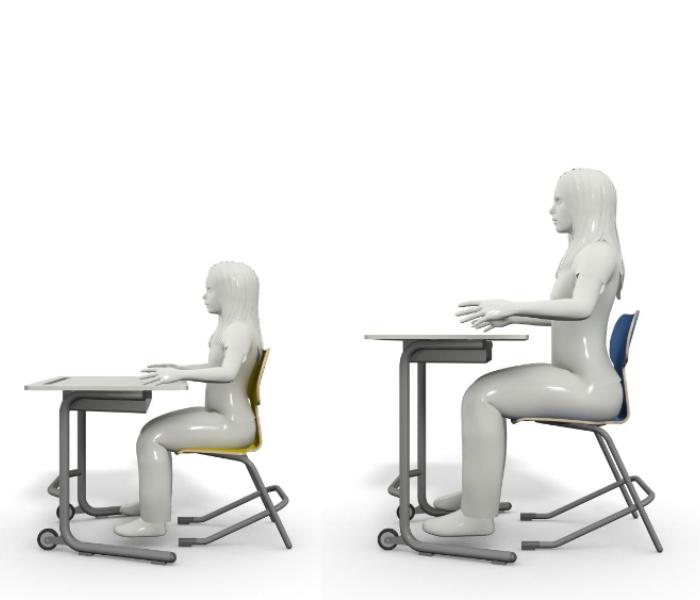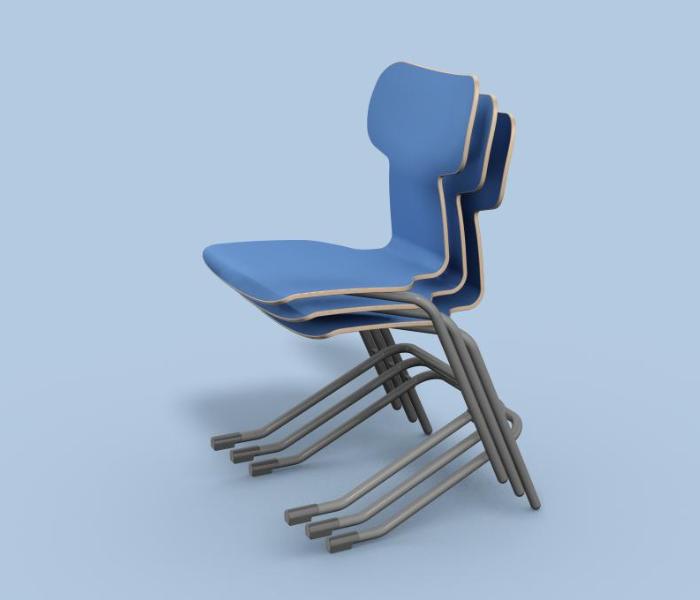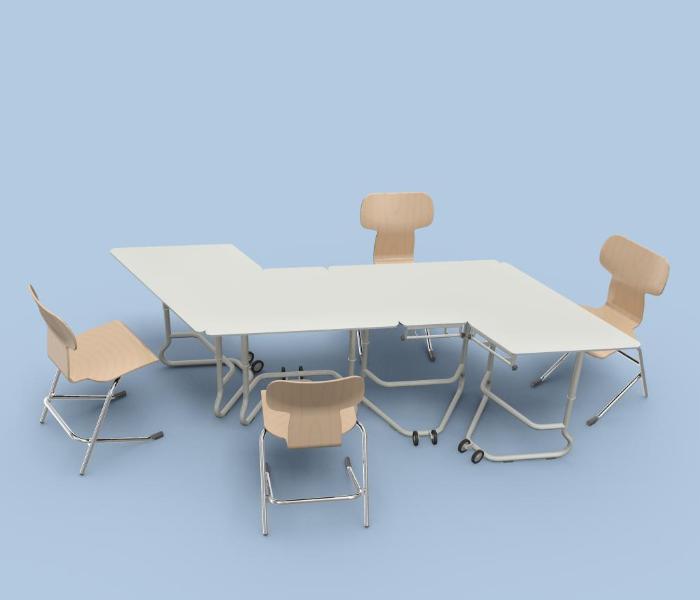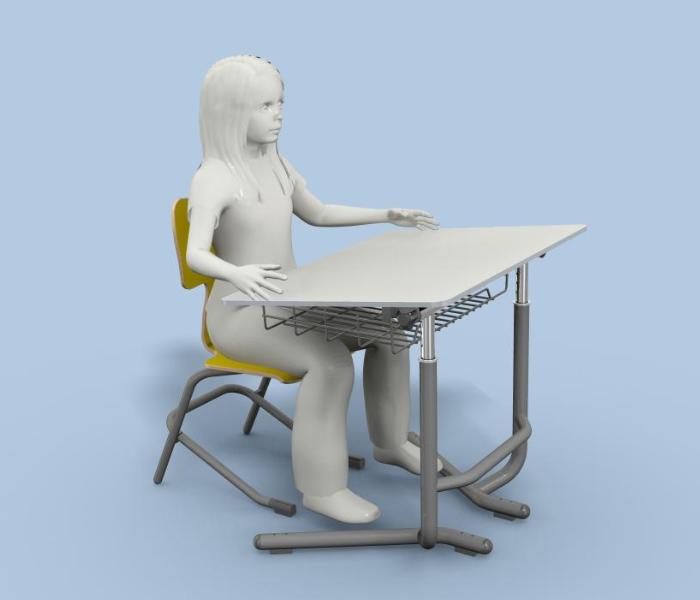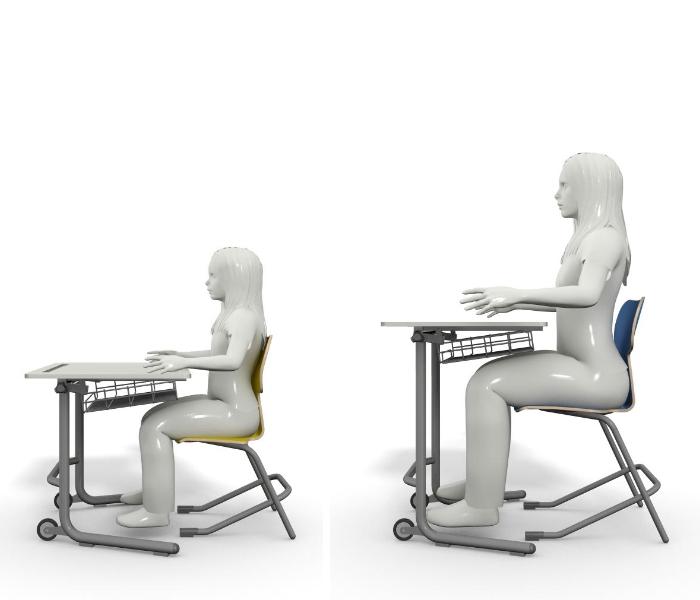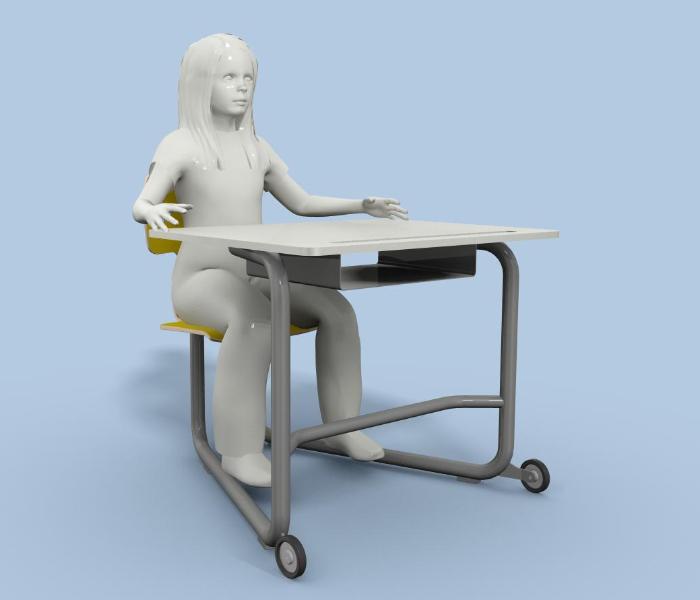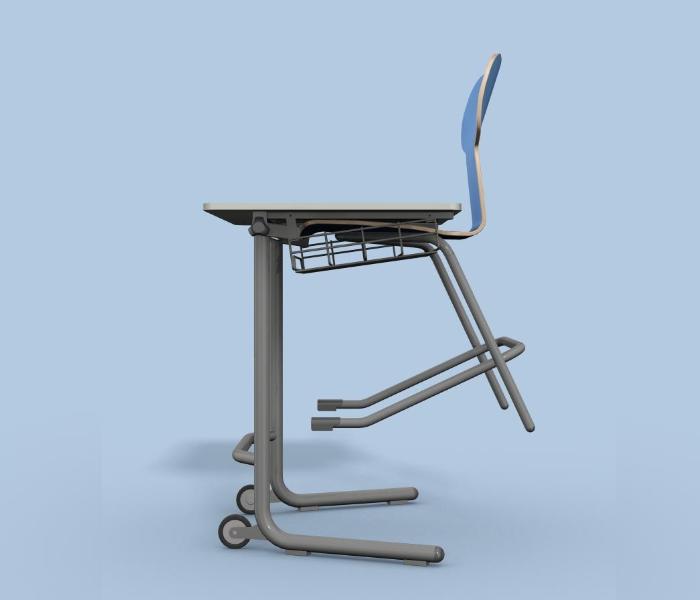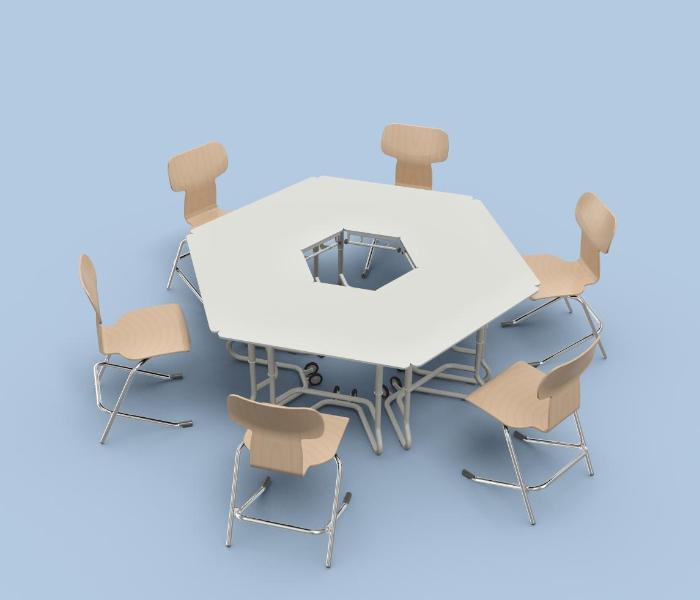Conceptual design of the school furniture collection – student’s workplace
General design assumptions
Ergonomics in the classroom:
1. Chairs and tables adapted to the student’s body.
Even the best school furniture is only as good as its adaptability. School furniture must fit the student, not the other way around:
First, the adjustment of the chair is important. The height is selected such that the front edge of the seat approximately corresponds to the lower kneecap joint at the knee joint. The hip joint is above the knee joint, with both feet firmly on the floor. When using the full depth of the seat, the front edge must not press against the lower leg. The backrest should support the back under the shoulder blades.
Secondly, adjusting the height of the table. When looking sideways at the table, the arms are angled 90 °. The elbows are now 2 to 3 centimeters under the underside of the front edge of the table.
2. Table height adjustment – gradual (eg in the size range 2-7), smooth on gas springs (in the size range 2-7).
Height-adjustable tables and chairs provide basic ergonomic requirements for healthy and creative learning and encourage good sitting posture.
What if the tabletop height is not set correctly? If the table top is too low, the students are forced to work with a bent posture – this puts strain on the spine discs. If the table is too high, the arm is too strained by working at the table.
3. The shape of the table top enables the assembly of individual tables, which allows a free “learning space” suitable for a given type of class, e.g. for individual or team work, learning in large or small groups, carrying out project work, etc. Science and the teaching environment are closely related to each other – it is necessary to create spaces that allow students for every possible opportunity for self-development.
4. Mobility of furniture necessary for easy reorganization of the classroom.
Classrooms are no longer organized for mono-functional use; provide space for differentiating learning. The spaces are alternative and can be quickly adapted for use by different groups with functional school furniture – easy to set up / manage. The classroom does not have to be oriented towards the teacher as one point of view, but takes on the features of a workshop.
Classrooms that can be easily changed and arranged provide a variety of teaching opportunities. Prerequisite – students and teacher must be able to adapt and create new configurations in minutes – without the help of a school janitor.
Creating a universal design will reduce material, tooling, labor, and logistics costs.
Suggested solutions
Version A – student position in the basic version:
- in sizes compliant with PN-EN 1729-1 (size 2-7),
- a chair with a bucket seat made of profiled plywood with fastening to the frame invisible from the top,
- frame made of powder coated carbon steel (pipe / profile),
- a stacking chair that can be hung on a school table top,
- optional shape of the table top ensuring the arrangement of tables into groups,
- a table top made of a furniture board or, optionally, a scratch-resistant material (e.g. HPL, color-uniform throughout),
- shelf or basket under the table,
- table mobility as an option.
On the basis of the basic version, a “school desk” may be created
Version B – student workstation with a table with height adjustable and lockable to the desired size:
- chair in sizes according to PN-EN 1729-1 (size 2-7),
- a chair with a bucket seat made of profiled plywood with fastening to the frame invisible from the top,
- frame made of powder coated carbon steel (pipe / profile),
- a stacking chair that can be hung on a school table top,
- stacking table,
- optional shape of the table top ensuring the arrangement of tables into groups,
- a table top made of a furniture board or, optionally, a scratch-resistant material (e.g. HPL, color-uniform throughout),
- shelf or basket under the table,
- table mobility.
Version B + – student workstation with a table with a top height adjustable with gas springs:
- chair in sizes according to PN-EN 1729-1 (size 2-7),
- a chair with a bucket seat made of profiled plywood with fastening to the frame invisible from the top,
- frame made of powder coated carbon steel (pipe / profile),
- a stacking chair that can be hung on a school table top,
- stacking table,
- optional shape of the table top ensuring the arrangement of tables into groups,
- a table top made of a furniture board or, optionally, a scratch-resistant material (e.g. HPL, color-uniform throughout),
- shelf or basket under the table,
- table mobility.
Projekty zrealizowane na zlecenie IKER
Product design and construction WÓJCIK DESIGN.
YEAR
2015
